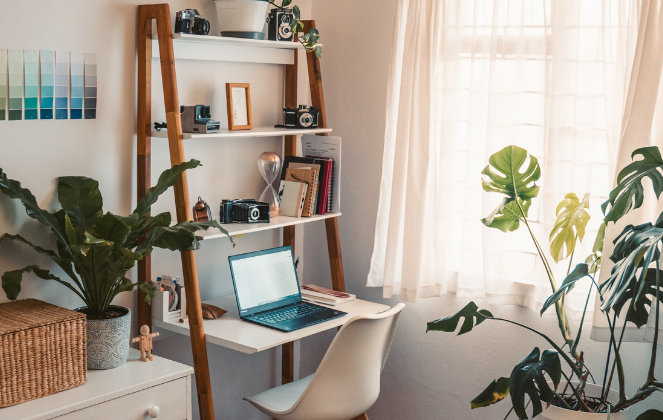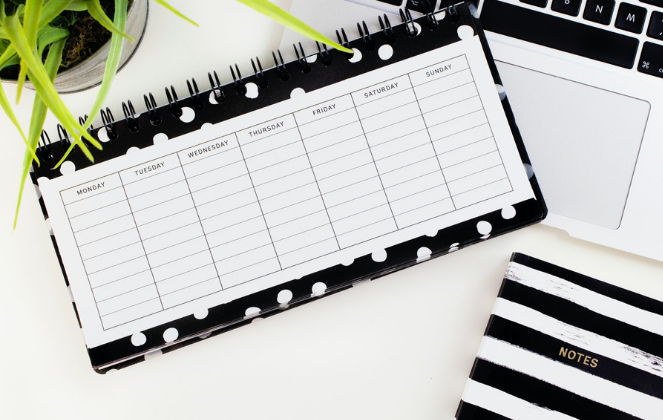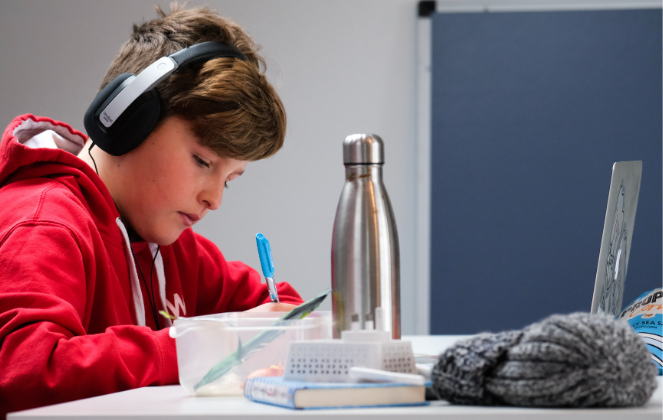The closure of schools due to the coronavirus pandemic has meant that many parents and caregivers have found themselves in the challenging position: remote learning means they have to become the schoolteacher as well as the parent, the gardener, the dog walker and cook, with no chance to repurpose your house into a classroom at the same time.
I´m sure most of us feel we have not done too badly given the circumstances! But it’s never too late to revisit how you have managed thus far and are there still some more handy tips that can make this task a little easier.
The key points that you want to achieve are:
- Help your kids adapt to this strange new reality
- Give you kids the best chance to keep on top of their schoolwork
- Keep them motivated and focussed and not feel disconnected
These are some ideas that you might not have thought of yet, or that might still be helpful if you’re running out of ideas.
1. Create the best space possible for your child.
Have you already created the ideal space for your child to work from? Or are they still taking over the kitchen table and there seems to be schoolbooks all over your house? Maybe it’s time to relocate the learning space for everyone’s sake and keep it for the purpose of schoolwork. Make it feel as close to the real thing as possible, if that means turning a corner of your living room into a mini-classroom complete with a whiteboard and snack station.
The space needs to be distraction free: And this might be a ludicrous proposition for some families, but at least having a good idea of what would be the best scenario and trying to get as close to that as possible. It might take a few go’s to get it right, and be sure to listen to your kids as their feedback counts too. As a child I used to study in the garden shed- coming from a large family I loved the peace and the independence I had retreating to the shed, and the cat seemed to enjoy my company too!
Ideally you want to set up this work area somewhere that is not their bedroom.
The bedroom should be kept as a work-free zone where they can go to get away from everyone, the noise, annoying siblings, and its where they sleep! Plus, on the upside, if they are in the living room or kitchen you can keep an eye on them and give some encouragement when distraction sets in.
It might be a nice treat to do some schoolwork in a fun place for an occasional change of scenery. Maybe if the weather is nice set up something in the garden, and if its miserable outside then set up a tent in the living room or go out to your local coffeeshop for an hour on a Friday.
Allow them to personalise the space with artwork, posters, stationary holders and keep it as clutter-free as possible. Reducing clutter and distractions helps kids focus. So get them into the habit of organising their paperwork into labelled files and folders, this way everybody wins.
Make sure they have all the materials they need, including a good internet connection and any school text books or apps that the teacher has recommended. Don’t underestimate the positive value of splashing out on some new stationary or personalised books such as this ABC book to make your kids feel a teeny bit special and encourage them through what is a challenging time.

2. Reduce distractions.
Think about what distractions are likely to interrupt your child – the dog, the TV, their mobile phones or even yours- and try to prevent the distraction become an issue or something to argue about. Get into the habit of putting the dog or cat outside, turning your phone on silent and switching off the TV, before school time starts.
Keep them close- you don’t want to be constantly nagging if they get distracted, but a one-worded reminder should be enough to get them back on track. If all else fails, then it’s probably time for a break.
3. Use technology to your advantage.
Avoid technoference by watching what your kids are getting up to on their phones or tablets while listening in to zoom classes or doing homework. Would they have their phones on their desks in school? Of course, they might be using tablets and laptops for schoolwork but make sure you can monitor their use.
- Set rules and boundaries as to how much time they spend during the school day socialising with their friends through chats and messages or scrolling through Instagram. Remember, they miss the real-time social interactions of being in school with their friends too- so maybe allow for a 15-minute break time where they can call a friend or have a group call at a break-time.
- Set up a learning buddy for your child – a fellow student they can connect online with daily, do assignments together with, quiz each other etc. This will help your kids feel like they are still part of a group and not feel so isolated.

4. Establish ground rules early on- and revisit them together often.
Allow you kids to have a say in how the rules are set-up, they will be much more likely to follow them if they have some shared responsibility in their co-creation.
Create a clear start to each day. For example, one rule could be that everyone has to be dressed, teeth brushed, and breakfast finished and put away before schoolwork starts. Staying in pyjamas for half the day won’t be as conducive as getting ready for the day and might act as a mental barrier.
5. Stick to a schedule.
Kids crave consistency, by keeping a clear schedule for working and break times you are staying closer to the real thing and you won’t lose valuable study time in the day. This requires planning around the entire family’s schedule but this way it will work best for everyone. Try to make it as close to a normal school day as possible but that it works for your home circumstances too.
- When are there less distractions around your home?
- What time are you or other adults around to help your child get started with their day?
- If you have children of different ages, will different times in the day suit them better? Youngest kids in the morning and teenagers in the afternoon?
- Factor in plenty of breaks – time to take the dog for a walk, get some fresh air, have a snack or even just some quiet time. Breaks can reduce stress, increase attention and productivity so we talk more about breaks below.
- Determine specific times for connecting with teachers, friends and homework- that way kids’ expectations can be managed between online work and their online social lives.
When structuring the day, maybe get your child’s input around what they prefer? If you have time to work with them first thing in the morning, then perhaps that’s when they would like help with maths or other subjects, they need most help with. Plan the day ahead too. So if assignments are due or a test is on the horizon, take the time to plan for this at the start of each day.

6. Breaks from home learning
Breaks for children are really important. Exercise increases blood flow to the brain which is necessary to help with staying focussed and alert. Before fatigue and distraction sets in, which can be after 15 minutes for younger kids, and 20 to 30 minutes for older kids- encourage them to get moving if they have been sitting for a while. Make these as ridiculous as you can get away with. Why not dance around the house with your kids may have seemed pretty daft pre-pandemic!
- Yoga stretches doing animal poses
- Run around the garden or an obstacle course around the house
- Building dens
- A quick game of musical statues
- Dance around to their favourite songs- have dance-offs!
Breaks don’t always have to be physical, they can be mental too. A moment of drawing, stretching or listening to some music can have a very positive effect. Especially if your child is already active, a physical break might lead to it being harder to settle down again. That’s why it might be best to try these other ideas for mental breaks to give them a chance to shift focus.
- Listen to a song- maybe some classical music or a short play
- Play with play-doh for five minutes
- Sit quietly and listen to their breathing
- Drawing or doodling
- Stretching
- Cooking
Keep snacks on hand and be sure to include drinking water.

How to schedule breaks from remote learning?
Either by or by timed intervals or completed tasks. This can vary depending on what your child is working on or even what works best for them. You can use a timer for this or observe when you feel they are getting distracted or frustrated.
Timed intervals work best for younger kids who need a break after a short space of time, every 5 to 10 minutes for a two minute break. Make sure your child understands the purpose of the break. That way, they understand its only a break and they will be returning to schoolwork after a few minutes. Most timers will warn you when the time is coming to an end.
Task-based breaks are more reward-based and work better for older kids. For example, when changing between subjects or after a particularly lengthy class or piece of homework. Again, it depends on the subject and how your child is feeling. Some kids breeze through maths homework while others will find it an uphill battle every time.
7. Exercise for remote learning
Physical activity even outside of the break times is very important and are key to everyone’s mental and physical well-being during these challenging times. It is proven that exercise reduces stress, prevents anxiety and improves our ability to solve problems and use our brains!
It’s recommended that young people spend at least an hour doing moderate intensity physical activity a day. Moderate intensity means you can talk but not sing while doing it
Be sure to lead by example and get in on the exercise yourself too! Youtube is full of Family-friendly workouts and yoga sessions- even for the youngest in the family. Maybe let your children pick the workouts and make it as fun as possible.

8. Manage Expectations – Remote learning is not a walk in the park
Bear in mind that children in school are being mentally stimulated all the time by their teachers, surrounding and their friends. Therefore, its normal that they find being at home more distracting and harder to take their schoolwork as seriously. So have a chat with them about why they should want to keep on top of schoolwork. Remind them that all their classmates are in the same situation as they are. Plus, their teachers are going to be checking their work just as closely as though they were in school. Keeping self-motivation levels high is hard but important.
For older children, have a chat about responsibility and try to encourage that they take ownership over their situation. This will help both you and them enormously, being on the same page and seeing how they might rise to the challenge will be rewarding for everyone.
Be empathetic and show that you understand it’s hard to stay motivated. Especially given the circumstances but try to find ways to reward them for their hard work.
9. Be proactive about keeping in touch with your child’s teacher
If you haven’t already done so, establish a direct line of communication with your child’s teacher. See what channel of communication they prefer and don’t be afraid to use it (email, text, phone call, video conferencing etc). Teachers will appreciate your efforts in supporting your child’s learning. No doubt they will be as much of a support to you as they will be for your child.
10. Be proud of what you are achieving.
Both you and your children are doing the unimaginable- so be proud of everyone for getting this far. Hang up your younger children’s work around your house to help them value their learning and keep reminding the older kids what a great job they are doing and encourage them to reflect on their progress.
Although we are not likely to forget this experience in a hurry, something good has come from these past few months. That we are much more in touch with our kids learning and we are so much better prepared to support them as they grow, both academically and emotionally, in the future. And dancing around the house together won’t be forgotten any time soon either!

